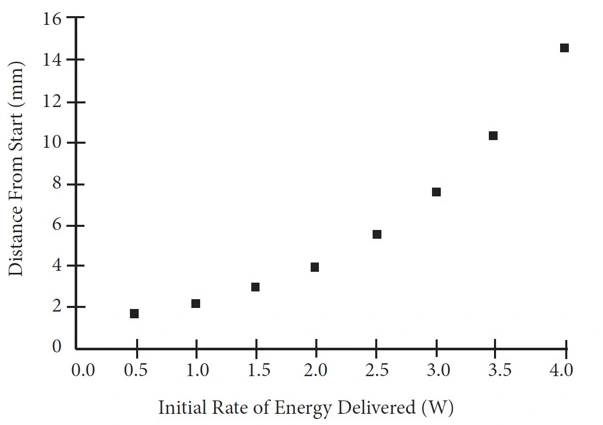6. A professional baseball team wishes to average 45,500 ticket purchases per game for the entire 162-game season. Through the first 60 games of the season, the team has averaged 43,000 ticket purchases per game. Which of the following most closely approximates how many ticket purchases per game the team must average for the remainder of the season in order to hit its overall goal of an average of 45,500 ticket purchases per game for the season?
7. A certain polynomial, P, has a degree of 2. Polynomial P has zeros of 2 and -3, and a > 0 when the function of polynomial P is written in the form of y = ax² + bx + c. Given this information, which of the following could be the graph of polynomial P ?

8. Circle O (not shown) is divided into three sectors. Points P, Q, and R are on the circumference of the circle. Sector POR has an area of 8π, and sector ROQ has an area of 6π. If the radius of circle O is 4, what is the measure of the central angle of sector QOP, in degrees?
A. 45
B. 90
C. 135
D. 180
9. Medical residents at Lakewood Hospital are choosing their individual specialties. Among them, 40% choose cardiology, 16% choose oncology, 34% choose endocrinology, and the remaining x% choose hematology. Once the doctors pick their first specialty, they are then each asked to choose a second specialty from the previous four options in case their original specialty is already filled. They may not pick their original specialty again. 20% of those who originally picked cardiology choose oncology as their second choice. If no other field chooses oncology as their second choice, and the hospital boasts 200 medical residents, then what is the total number of residents who named oncology as either their first or second choice, in terms of x ?
A. 8x – 128
B. 8x – 144
C. x² + 24x – 188
D. x² – 24x + 188
10. Mr. Lastorka’s science class is running experiments with an energy-efficient model electric car. As the initial rate of energy delivered to the car, measured in watts, increases, the number of millimeters moved by the car from its starting position increases exponentially. The results of several trial runs are shown on the scatterplot graph below.

Based on the data, the students in Mr. Lastorka’s class determine the exact equation involving Watts, x, and total distance from start, y . They call the function y = f(x). Mr. Lastorka then instructs his class to reflect y = f(x) over the x-axis. He challenges each student to determine the new function and what it would mean from a physics perspective. Four student pairs gave their answers below. Who is correct, and for what reasons?
A. Charles and Shannon, who identify the new equation as y = \( -2^x \) and explain that the new graph indicates that the car is still moving forward at the same rate as before.
B. Michael and Lauren, who identify the new equation as y = \( -2^-x \) and explain that the new graph indicates the car is now moving in reverse at the same rate as before.
C. Matthew and Karen, who identify the new equation as y = \( 2^-x \) and explain that the new graph indicates that the car is now moving forward more rapidly than before.
D. Andy and Joanie, who identify the new equation as y = \( 2^-x \) and explain that the new graph indicates that the car is no longer moving in any direction.
Warning: Undefined variable $in_same_cat in /www/wwwroot/mtexam.com/public_html/wp-content/plugins/EXP.GKFEED.COM/function.php on line 27
Warning: Undefined variable $excluded_categories in /www/wwwroot/mtexam.com/public_html/wp-content/plugins/EXP.GKFEED.COM/function.php on line 27
